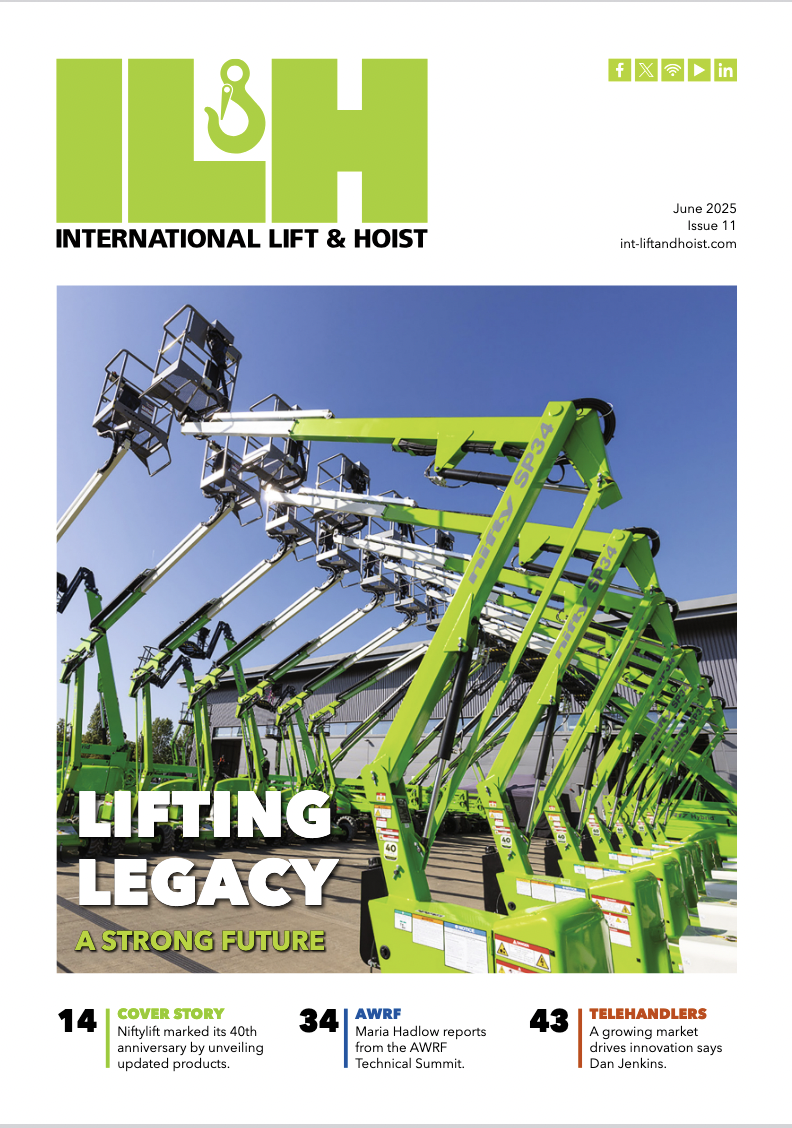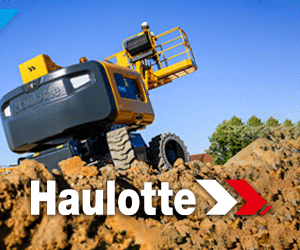Redesigned for Maximum Performance: Upgrades to the Xtreme telehandler line meet company standards and buyers’ demands
Part One
Since launching its first telehandler product line in 2001, Don Ahern, owner of Xtreme Manufacturing in Las Vegas and Ahern Equipment Rentals, would admit that applying his knowledge of the rental business to manufacturing isn't necessarily an easy transition. Nevertheless, the company has successfully held its own in a very competitive marketplace. And a recent major redesign across the entire product line is part of the ongoing endeavor to deliver a product that meets Ahern's own demanding standards as well as those of buyers. The XRM 842, 1045, 1245, and 1254 represent the first major product enhancement to be implemented by the company.
![]()
Xtreme Act 2
I recently tested the 10,000-pound capacity XRM 1045, which replaces the XRM 945 (Images 1 and 2). It is representative of all the changes that have been made throughout Xtreme's pick-and-carry product line. On the surface, the most notable modification is the upgraded capacity, which has been increased by 1,000 pounds. But what sets this particular model apart from the others in the line is its ability to handle 5 tons without the use of outriggers.
The capacity increase is directly related to the redesign of the fork carriage leveling system. Xtreme's engineers made the decision to abandon their unique integrated fork-leveling system in favor of a more conventional master-slave cylinder configuration. Feedback from customers indicated that the old system didn't give them precise control in high-capacity situations. The original system shared the action and flow from the main tilt cylinder to level the fork carriage. Isolating the lift cylinders from the tilt cylinder and the addition of separate master cylinders provided additional lift capacity and improved control in extreme load conditions. Note that all the main components, including axles, boom assembly, and chassis, were initially over-designed, so little, if any, alterations were required for the units to handle the added capacity.
As a separate issue, Xtreme also upgraded its axles. The Carraro 26.43 axle (Image 3) has vastly improved the Ackermann steering geometry in the four-wheel mode, and it is significantly more robust. Increased spacing in the wheel bearings reduce stress and prolong life. Larger ball joints are also part of the new design.
Other changes include a 50 percent thicker trumpet flange (the part that bolts up to the differential box), increased material in the yokes, and a higher tensile strength for all castings to address some cracking and bending experienced during high-speed roading.

Don't fix what ain't broke!
Having reviewed several Xtreme machines in the past, I am familiar with what makes them attractive to both owners and operators. The enhancements have had little effect on what was already right with these units.
Most important is the machine's key feature • visibility. According to Ahern, “Visibility was the key driver of this design through the entire product line.”
You cannot ignore, however, that the addition of the master cylinders has obstructed the rearward line of sight some. But as I sat in the operator's seat, I found the difference to be minimal.
Another major selling point of the original design was its robustness. Material, welds, paint, and components remain of the highest quality on the new generation. I had a chance to see the new models as they were being assembled. The entire chassis is pre-painted. Chassis upright sections along the length of the XRM 1045's frame are fabricated from 1-1/4 inch plate steel. The high gloss finish includes a two-part epoxy etching primer, which allows the primer to penetrate into the metal for maximum adherence. The topcoat includes a two-part urethane enamel. The finish is simply lustrous to both the eye and the touch.
Keeping with the company's original low cost-of-ownership philosophy, a few service issues have been thoughtfully addressed. Access to the engine bay is exceptional, and the majority of engine-related service points, including the water separator, engine coolant, oil, and engine starter are mounted on the same side of the engine, opposite the cab (Image 4).
As with all other Xtreme telehandlers, the XRM 1045 uses a roller boom assembly. The load-bearing surface of the dry boom rides on huge heavy-duty rollers (Image 5). All the boom rollers and pivot points feature sealed bearings. Melonite-treated steel pins, a rust inhibitor, are mated with bronze bushings, which also ride on sealed bearings. These are intended to last the life of the machine. An internal extend/retract cylinder works with massive extension and retraction roller chains. The cylinder is accessible from the back of the boom. I was told that all that is required to slide the cylinder out is to remove three pins, four bolts, and two hydraulic fittings. In the event that the boom needs to be lowered manually, the lift and telescope cylinders are fitted with valves featuring bleed-off capabilities. Designing it this way eliminates the potential for large hydraulic spills and injury associated with cracking a highly pressurized line.
The carriage's tilt cylinder (Image 6) is positioned on top of the boom head to minimize the chance of damage to the rod. But just in case something was to be dropped on it, the rod is induction heat treated for increased hardness.
Xtreme utilizes an innovative three-section aluminum radiator supplied by Radiator Specialties of Moreno Valley, Calif. The top section is a normal engine block cooler, and the middle section is the transmission oil cooler. The lower section, however, is dedicated to the turbocharger. Pre-cooling the air boosts engine performance, but also helps the 108-hp Perkins 1104 diesel engine meet Tier II emissions. The engine, which is mounted mid-chassis and inline with the frame, is mounted directly to a Carraro TLB2 four-speed forward and reverse power-shift transmission. An independent electric fuel pump self-primes the injectors when, not if, the unit runs out of diesel fuel.
The engine, hydraulic pump, and hydraulic distribution manifolds are housed under fiberglass covers, but this isn't your everyday fiberglass. A product similar to Kevlar is woven into the fibers for additional reinforcement. The starter battery is stored in a rear compartment under a heavy steel cover designed to protect it from damage. Although no lock was present during the review, Xtreme has since designed a battery-mount retainer that allows easy service access but resists against theft.
A by-product of the revised hydraulic design was a customization of the hydraulic control system supplied by HAWE Hydraulics, Charlotte, N.C. These are full-pressure mechanical-over-hydraulic boom controls. A new lift control spool has improved control response at any position of the controller or speed of the engine. Hydraulic flow is provided by a Kawasaki variable displacement piston pump, which has an excellent track record in harsh hydraulic excavator and forestry applications. Pump model K3VL80 supplies up to 49 gpm at the rated engine speed of 2,300 rpm. System pressure is 3,500 psi continuous output.
Next issue, look for my first-hand assessment of the redesigned XRM 1045.
Part Two
Xtreme Manufacturing, Las Vegas, successfully launched a new telehandler line in 2001 in a very competitive marketplace. A recent major redesign across the entire product line is part of the company's ongoing endeavor to deliver a product that meets owner Don Ahern's demanding standards as well as those of buyers. The XRM 842, 1045, 1245, and 1254 represent the first major product enhancement to be implemented by the company.
Part One includes a review of the machine features that were right-on to begin with. Visibility, robust design, and low cost of ownership make these telehandlers attractive to both owners and operators. My first-hand assessment of the redesigned XRM 1045 (Image 1) follows.
In the saddle
It's nearly impossible to argue with Xtreme's claim about excellent visibility (Image 3). Even with the new master cylinders, my line of sight was wide open. I took the opportunity to jockey the unit around and then load and unload it onto one of Ahern's transports. My view of all four tires allowed me the confidence to quickly yet safely load and unload.
The XRM 1045 is equipped with a fully adjustable suspension seat provided by Grammer of Hudson, Wis. This features easy-to-remove back and bottom cushions. Likewise, the dashboard is protected by a scratch-resistant Lexan decal. The clear cover is cut with oversized openings for all the switches and controls • a quick and cost-effective way to replace the cover and keep the control panel and decals legible.
I also learned that a new cab, produced by Saf-T-Cab, Fresno, Calif., will be fitted on machines beginning in April. Although there will be a few aesthetic improvements, the major advantage of this cab is it can be enclosed more easily. Since the engine is literally over your right shoulder, diesel clatter is quite high.
Xtreme's signature Y controller (Image 4) is a beefy, multifunction design that allows the operator to multitask. With your hand on the joystick, the forearm can actuate the Y controller to sway the frame at the same time. Frame sway is 11. For operator comfort, these controls are mounted to a sub-assembly that can be moved horizontally fore and aft several inches. Another example of attention to XXXXX facilitates blowing out the cab with a pressure washer while limiting potential damage at the same time.
I found the controls responsive and smooth no matter what rpm I ran the engine. There's one thing I should mention: When raising the boom, I noticed the carriage shift one to two inches to the right as it initiated upward movement. Since the main lift cylinders ride on a spherical bearing, it seems that the right cylinder was getting a head start coming out of the hole. I jumped on a couple of other new units in the yard and could not replicate the problem, indicating this was an anomaly. Follow-up discussions with the engineers confirmed that the counterbalance valve was just a tiny bit out of adjustment • an easy fix.
The dual brake control system is supplied by MICO, North Mankato, Minn., and works with the internal brakes that are integral to the Carraro axles. Although it provided rock-solid performance even when backing off the trailer, I was confronted with some minor jerkiness when braking at low speeds.
The XRM 1045 offers four steering modes • standard two-wheel front, four-wheel circle, and four-wheel crab steering plus optional two-wheel rear steer. The outside turning radius is a class leading 12 feet. Despite using an in-frame engine, Xtreme has held its overall height to an impressive 7'11".
Of course, one way to show confidence in your “low ownership cost” sales pitch is to back it up with a great warranty. Xtreme Manufacturing's warranty includes 10 years on the steel structure; five years on the roller boom assembly, three years on all hydraulic components, and two years on the power train.

Likes
– Despite the addition of master cylinders to the design, visibility from the cab remains excellent.
– Material, welds, paint, and components remain of the highest quality, contributing to the machine's overall robust design.
– Full-pressure, mechanical-over-hydraulic boom controls with new valves feature improved control response at any position of the controller or speed of the engine.
– The unit is designed to be simple to service.

Dislikes
– Engine's proximity to the operator increases noise level that must be tolerated.
– I experienced minor jerkiness when braking at low speeds.

Verdict
The increased capacity of the redesigned Xtreme telehandler line maximizes its positive, robust features more efficiently.











